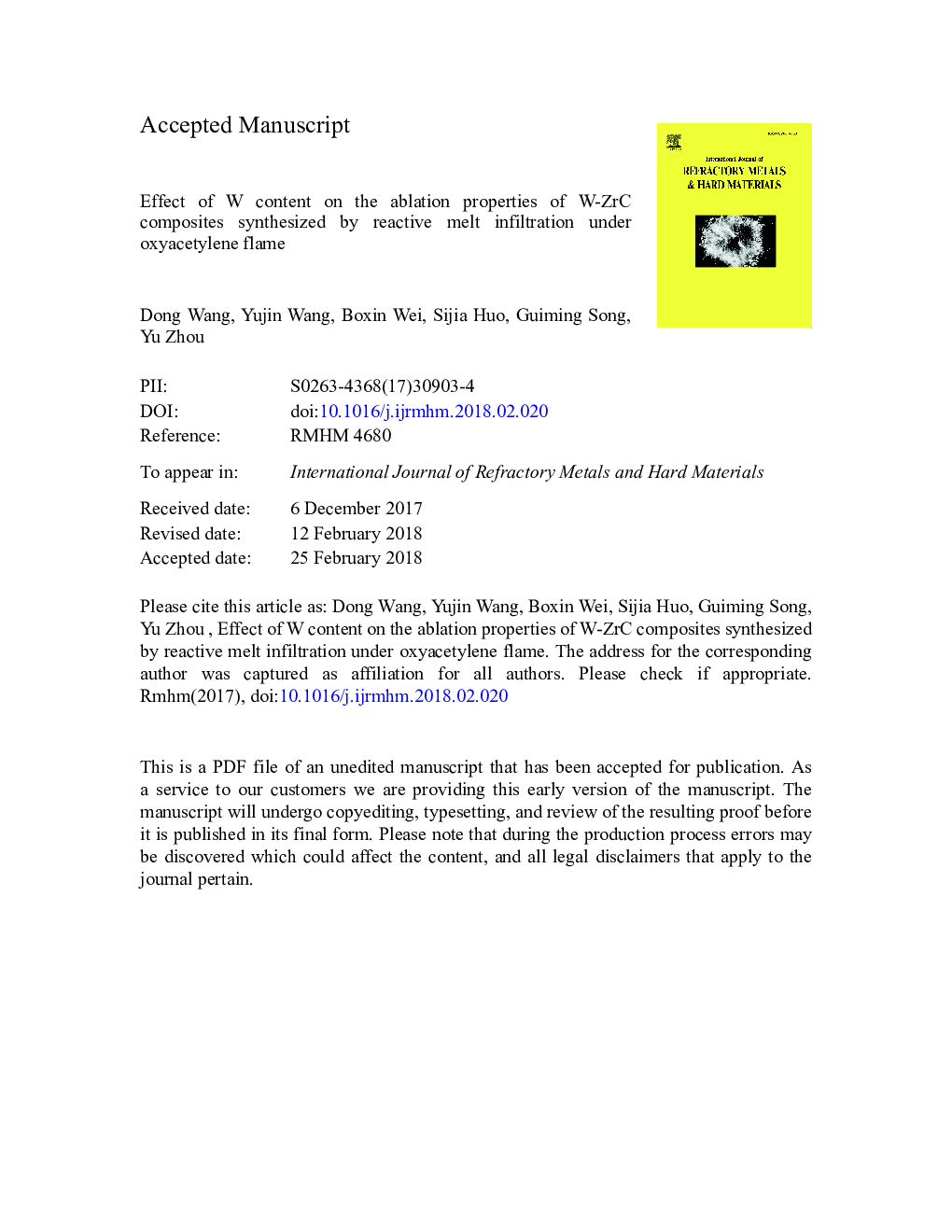| Article ID | Journal | Published Year | Pages | File Type |
|---|---|---|---|---|
| 7989540 | International Journal of Refractory Metals and Hard Materials | 2018 | 47 Pages |
Abstract
W-ZrC composites with different W contents from 48 to 68â¯vol% have been produced by reactive melt infiltration of molten Zr2Cu alloy into porous preforms from partially-carburized W powders at 1300â¯Â°C for 1â¯h in vacuum. The influence of W content on ablation behavior and properties was evaluated under oxyacetylene flame conditions. When W content is above 50â¯vol%, the W-ZrC composites withstood the thermal shock at the early ablation stage. The linear and mass ablation rates of the 68â¯vol% W-ZrC composite without residual tungsten carbides are 0.8â¯Î¼m·sâ1 and 3.5â¯mg·sâ1, respectively, tested at 2600â¯Â°C for 120â¯s. Such a performance is attributed to the evaporation of WO3 and residual Cu and the formation of protective ZrO2-rich oxide layers on the ablated surfaces of the composites. The ablation of W-ZrC composites is mainly caused by the thermo-chemical oxidation as well as thermo-mechanical erosion of the formed oxides.
Related Topics
Physical Sciences and Engineering
Materials Science
Metals and Alloys
Authors
Dong Wang, Yujin Wang, Boxin Wei, Sijia Huo, Guiming Song, Yu Zhou,
